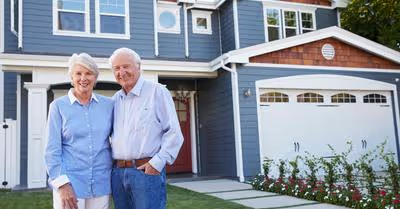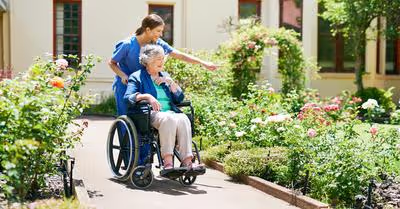Table of Contents
Best Affordable Housing for Seniors
Choosing the best affordable housing for seniors can be a complex and challenging process. But, there are several factors that seniors should consider when making this important decision.
One important factor is the housing location, as seniors often prefer to live in areas close to family, friends, and community resources.
Another factor is the size and layout of the housing, which can affect comfort and accessibility. Safety and security are also important considerations, as seniors may have mobility or health issues that require additional support or accommodations.
In addition to these factors, there are specific considerations for each type of affordable housing option. Public and subsidized housing, for example, may offer lower costs and greater stability but may also have long waiting lists and limited availability.
Assisted living facilities can provide additional support services but can also be more expensive and have strict eligibility requirements.
Shared housing can offer social opportunities and cost savings but may require more flexibility and compromise.
Note that Section 8 housing can provide rental assistance; they pay nearly half of the rent.
To help compare these different options, the following table summarizes some of the key factors for each type of affordable housing option:
Public Housing
This type of housing is owned and operated by the government and made available to eligible low-income families and homeless veterans. It’s often located in apartment buildings or complexes and typically offers one or two-bedroom units.
The housing prices are generally based on a tenant's income and are set at 30% of their monthly income. This means that seniors who earn less will pay less in rent, making it an affordable option for those who may be on a fixed income.
Subsidized Living
Subsidized housing is typically owned and operated by non-profit organizations or private companies but receives government funding to help keep costs low. Subsidized housing for seniors may come in the form of apartment buildings, townhomes, or other types of living arrangements.
The rent for the low-income apartments is also based on a tenant's income but may be slightly higher than that of public housing.
Both public and subsidized senior housing typically offer amenities such as community spaces, laundry facilities, and on-site management. They may also provide basic needs such as meal delivery, transportation assistance, and health care referrals.
While public and subsidized senior housing can be a great option for senior citizens on a fixed income, there are some drawbacks. One potential issue is the limited availability of units, as waiting lists for those who qualify for public housing can be long and competitive.
Additionally, while these housing options are ideal for seniors with low-income levels, they may also be located in areas that are less desirable or less accessible than other housing options.
Assisted Living
Assisted living is a popular option for seniors who need a little extra help with daily tasks but want to maintain their independence. These facilities offer a variety of services and amenities to help seniors live comfortably and safely.
Seniors find Assisted living facilities ideal since they provide residents with their private low-income apartments or suites, which may include a kitchenette, bathroom, and living area.
Additionally, these low-income senior housing often offer supportive services, meals, transportation, and recreational activities. Their staff members are available around-the-clock to provide personal care services such as bathing, dressing, medication management, and other daily activities.
Typically, an assisted living facility provides peace of mind to both seniors and their families. Low-income seniors can enjoy the privacy and independence of having their own home while accessing the support and assistance they need.
Additionally, family members can feel confident knowing their loved one receives quality care and support.
However, it's important to note that these low-income senior apartments can be expensive. The cost of these facilities varies depending on location, level of care needed, and amenities offered.
Shared Housing
Shared housing senior housing is an option that is becoming increasingly popular among seniors who want to save money and live in a community setting. In shared housing, many seniors live together in a single residence and share the cost of rent, utilities, and other expenses.
This affordable housing can take many forms, from roommates in a private home to a group of seniors living in a larger residence. In many cases, the household members have similar interests or lifestyles, which can help foster a sense of community.
This housing is beneficial as it can help combat feelings of loneliness and isolation by providing seniors with regular social interaction enhancing overall well-being.
However, shared housing also comes with some potential drawbacks. Living with others can require a certain level of compromise and flexibility, and disagreements may arise over things like household chores or noise levels.
Additionally, finding compatible roommates and navigating the logistics of sharing a living space can be difficult.
Section 8 Housing
Section 8 senior housing is a type of low-income housing program that provides rental assistance to eligible seniors who desire independent living. This program is administered by the federal government and helps seniors who may be struggling to afford safe and comfortable housing.
Under the Section 8 program, eligible seniors are given vouchers that can be used to pay for a portion of their rent. The voucher amount is based on the senior's income and the cost of housing in their area. Seniors are then responsible for finding a landlord who accepts Section 8 housing vouchers and meets other program requirements.
This government program is beneficial as seniors living on a fixed income or who want to lower their living costs can receive help with their housing costs. As such, they can free up money for other expenses like food and healthcare.
However, it's important to note that Section 8 housing can be in high demand, and waiting lists can be long. Additionally, not all landlords accept Section 8 vouchers, which can make finding a suitable living situation more challenging.
Also, keep in mind that admission to Section 8 housing requires a social security number. This is because Section 8 housing is administered by the US Department of Housing and Urban Development.
This department requires applicants to provide a social security number to verify their identity and determine their eligibility for housing assistance.
Innovative, Affordable Housing Models for Seniors
While traditional affordable housing options like public housing and Section 8 vouchers are well-known, several innovative models are being developed to meet the unique needs of seniors.
One such model is co-housing developments specifically designed for seniors. These communities offer shared spaces and resources and a sense of community and social support for residents.
Additionally, some existing properties are being retrofitted to make them more senior-friendly, such as adding wheelchair ramps, grab bars and other accessibility features.
These innovative, affordable housing models not only provide seniors with safe and affordable housing options, but they also reduce errors and on-site skilled labor needs.
Therefore, it’s important for communities to explore and implement innovative, affordable senior living options that meet their unique needs. By doing so, we can ensure that seniors have access to safe, affordable, and supportive housing options.
Here is a table comparing traditional and innovative senior housing models:
Recent Articles
















